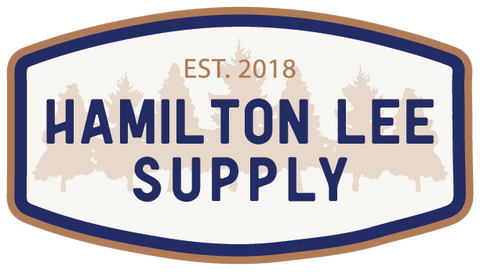LiveEdge Black Locust
Couldn't load pickup availability
Species: Black Locust
SKU: BGCGBL614
Length: 66"
Width (Bottom): 18"
Width (Middle): 19"
Width (Top): 20"
Thickness: 2.125"
Board Foot: 18.51 BDFT
Weight Estimate: 77 Pounds
Origin: Battleground, Washington
Shipping Information:
-Slab Ships From: Battle Ground, Washington
-All slabs are subject to freighted shipping. Once purchased, we will contact you via email or phone to coordinate and secure the best negotiated shipping rate for your location. Shipping costs are based on your zip code, residential/commercial address classification, and whether a liftgate/forklift is required.
If you can't find a slab that perfectly fits your needs among our listed options, feel free to reach out to us directly. We can check our inventory for additional slabs that may suit your preferences.
Contact Information:
-Email: info@hamiltonleesupply.com
-Phone: 360.601.8388
Transform your vision into reality with our remarkable Live Edge slabs. Embrace the artistry of nature in your next woodworking project and create a unique masterpiece for your home.
Crafted with precision and attention to detail, this kiln-dried slab is project-ready, ensuring minimal wood movement and cracking. Our state-of-the-art iDry vacuum kiln removes moisture, guaranteeing its suitability for your project right away.
Please note that as each tree is unique, no two slabs are alike. This individuality guarantees that your furniture piece, whether it's a table, shelf, or any other creation, will be truly one-of-a-kind.
At Hamilton Lee Supply, we are committed to preserving and reusing stunning wood materials. Our focus on sustainability means that every slab tells a story and contributes to a greener future.
Commonly referred to as Black locust, robinia, or false acacia
Scientifically recognized as Robinia pseudoacacia
Indigenous to centraleastern regions of the United States and widely naturalized in numerous temperate areas worldwide
Attains a height range of 65100 feet (2030 meters) with trunk diameters of 23 feet (0.61 meter)
Exhibits an average dried weight of 48.0 pounds per cubic foot (770 kilograms per cubic meter)
Displays a specific gravity of 0.66 (green) and 0.77 (12% moisture content)
Possesses a Janka hardness rating of 1,700 lbf (7,560 N)
Demonstrates a modulus of rupture of 19,400 lbf/in² (133.8 MPa)
Features an elastic modulus of 2,050,000 lbf/in² (14.14 GPa)
Showcases a crushing strength of 10,200 lbf/in² (70.3 MPa)
Experiences radial shrinkage of 4.6%, tangential shrinkage of 7.2%, volumetric shrinkage of 10.2%, and a T/R ratio of 1.6
The color spectrum spans from a pale greenishyellow to a darker brown, with a tendency to darken to a russet brown as it ages. It can be occasionally mistaken for osage orange and honey locust.
Typically exhibits straight grain with a medium texture
Rated as very durable with excellent weathering properties, commonly used for fence posts due to its exceptional outdoor longevity
Workability varies; its high density and hardness may pose challenges when machining compared to other domestic hardwoods, with moderate blunting of cutting edges. However, it responds well to lathe turning and steam bending and offers favorable gluing and finishing qualities.
Lacks a distinctive odor
Occasional reports of skin and eye irritation; rare cases of nausea; consult Wood Allergies and Toxicity and Wood Dust Safety articles for further information
Pricing and availability depend on location, with moderate prices within its natural range in the eastern United States; higher prices in areas where it is imported
Classified as a species of least concern by the IUCN and not listed in the CITES Appendices; considered invasive in some regions
Versatile applications include fence posts, boatbuilding, flooring, furniture, mine timbers, railroad ties, turned items, and veneer
Known for its exceptional hardness and strength, often competing with hickory as one of the strongest and stiffest domestic woods while offering enhanced stability and resistance to decay
Despite sharing a common name with honey locust, they belong to different genera, Robinia and Gleditsia, respectively. Black locust tends to be slightly heavier, harder, and may feature a greenish or yellowish tinge, while honey locust exhibits warmer orange or red tones.
Potential confusion with other Eastern United States ringporous hardwoods such as honey locust, Kentucky coffeetree, osage orange, and red mulberry; black locust is distinguishable by abundant tyloses and fluorescent heartwood under a blacklight
Notable feature: Heartwood fluoresces a vibrant yellowgreen when exposed to a blacklight
Within the Robinia genus, there are few species, primarily shrubs or small trees, with Robinia pseudoacacia being the main species used for commercial lumber.







